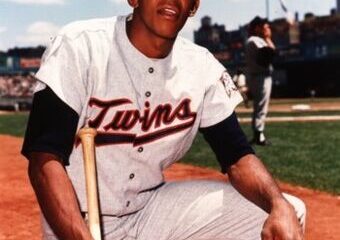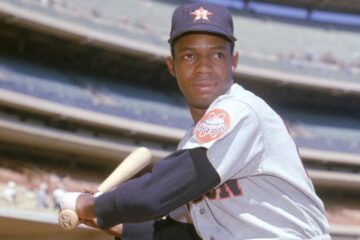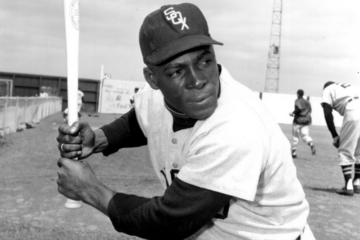The Hall of Fame Index: Current Catchers

Back in 2010, Iuniverse was gracious enough to publish The Hall of Fame Index. The Hall of Fame has been a labor of love of mine for nearly two decades. So, even though the book has long been published, we soldier on and makes all the updates we can. Primarily, that means taking a look at current players and comparing them those that have already been elected to the Hall of Fame.
There are similar systems out there, so I thought I would make an introduction to what makes my system different than the others before we get started with my series. First, I use three different statistical platforms in my formula. The idea is to combine the best sabermetric minds of the day to get the consensus on a player. Those include bWAR (baseball-reference), fWAR (Fangraphs), and WARP (Baseball Prospectus). Each platform uses wins above replacement, so we are essentially looking at compatible statistics that have slightly different views on how players accrue value.
The second component of the index is a peak value component that comprises of the player’s best ten year stretch. The idea behind ten years (which makes it different from some systems) is because you have to play ten seasons to be eligible for the Hall of Fame. So, only active players with at least ten seasons are eligible to be enshrined. That means that only three catchers meet that current criteria. I’ve written articles like this before and since I’ve published a book on the subject I have been known to ramble. Six catchers are clearly above and beyond the others in the Hall of Fame. Roy Campanella is a special case I looked at in the book, but he is not particularly relevant to our conversation. Comparing our three active players to them makes little sense. We will compare ours to the other three.
Career Value
| bWAR | fWAR | WARP | Total | |
| Bill Dickey | 55.8 | 56.1 | 56.0 | 167.9 |
| Gabby Hartnett | 53.4 | 53.7 | 53.5 | 160.6 |
| Mickey Cochrane | 52.1 | 50.6 | 51.3 | 154.0 |
WAR has a way or evening things out. Many disinterested fans may wonder what all the fuss is about. Essentially, WAR eliminates the biases of time and place. Players from the 1920s and 1930s (Cochrane, Dickey, and Harnett) put up gaudier numbers than other eras. So, the relative value of hitting .300 (for example) is less during the Live Ball Era.
Then, we have the bias of the home ballpark and the team a player plays for. Good teams have more run scoring and RBI opportunities. Playing in a hitter’s park also creates that advantage. So, judging a player on home runs, runs, RBI, and batting average is less reliable than what we might think. WAR also includes a heavy element on fielding as well, so we are talking about the whole player here.
Interpreting the index is easier than it sounds. Essentially, we are looking for gaps. There isn’t an appreciable difference between say Cohrane and Dickey, so saying one should be in and one should be out is foolish. However, as we well know, there are accentuating circumstances there.
| bWAR | fWAR | WARP | Total | |
| Joe Mauer | 50.3 | 46.1 | 48.9 | 145.3 |
| Brian McCann | 29.9 | 35.9 | 57.7 | 123.5 |
| Yadier Molina | 33.9 | 33.8 | 47.0 | 114.7 |
As we can see, Joe Mauer is almost there in terms of career value. We forget now because he is marginal in value, but he has won an MVP award and been among the top players in the league. The other two have been among the top five amongst catchers in value, but have never approached that level during their prime. That being said, they are both producing value where Mauer is spinning his wheels.
We have to remember that career value is found in triplicate. So, if Mauer can somehow manage to find five more wins in his career then that would be 15 wins in the index. 160 wins should be enough to get him home. McCann and Molina will need a little more work. However, it is not out of the question for that they could enter into the conversation depending on their peak value.
Peak Value
| bWAR | fWAR | WARP | Total | |
| Mickey Cochrane | 47.0 | 45.4 | 46.2 | 138.6 |
| Bill Dickey | 42.4 | 41.8 | 42.1 | 126.3 |
| Gabby Hartnett | 35.6 | 36.4 | 36.0 | 108.0 |
Another name for the peak value element is what we might call the fame element. Critics of the statistical element of Hall of Fame selection is that it isn’t called the Hall of Statistics. It’s the Hall of Fame. Numerous voters have statistical milestones they look for. For most, 3000 hits and 500 home runs are automatic. The problem with catchers is that none of them have reached those particular milestones. So, we are left with some soft milestones like 2000 hits and 300 home runs.
These numbers ignore the relative way in which they were achieved. Someone that averages 20 home runs a season over 15 years gets to the magic 300 figure. Someone that averages 30 homers over ten seasons reaches the same mark, but they are two very different players. Going with the overall career value (even when using an enlightened method like the index) ignores the way in which those were achieved.
If one prefers, we could use a more qualitative approach. Looking at the MVP vote tells us how the players were viewed at the time. Cochrane has two MVPs to his credit and four more top ten finishes. We took out Roy Campanella, but he had three MVP awards himself. Dickey did not win the award, but finished in the top five three times and twice more in the top ten. Harnett won the award and was a runner up one other time, but rarely was a factor outside of those two seasons.
Longevity is a feat by itself. Additionally, the index guards against what we might call the accumulation effect. Players often play beyond their usefulness and if they have a long track record success teams will allow them to do it. Players can add those statistical markers without adding value. Hartnett played for twenty seasons, but did not add any value beyond what Cochrane and Dickey had in fewer seasons.
| bWAR | fWAR | WARP | Total | |
| Joe Mauer | 45.0 | 43.5 | 46.9 | 135.4 |
| Brian McCann | 27.7 | 33.2 | 53.5 | 114.4 |
| Yadier Molina | 31.8 | 32.1 | 43.6 | 107.5 |
Again, we can look at this qualitatively in addition to the pure numbers. Mauer is the only one here that has won an MVP award. He also had another top five finish and two additional top ten finishes. On the other hand, McCann has had only two seasons where he received MVP votes and both of those saw him finish outside the top 20. The BBWAA often misses the boat on how valuable guys are. In 2008, McCann finished 10th among position players in WAR for instance. Still, since the BBWAA also votes for the Hall of Fame, those MVP finishes give us a clue.
Molina is in a different category than the other two. He has two top five finishes unlike McCann, but he also has eight Gold Glove awards and is still going strong. If he finishes with ten that will place him behind only Ivan Rodriguez and even with Johnny Bench. That might bump him up in their estimation because people seem to remember the great fielders and give that more credit than what it may deserve in terms of absolute value.
The Hall of Fame Index
| Career | Peak | Total | |
| Bill Dickey | 167.9 | 126.3 | 294.2 |
| Mickey Cochrane | 154.0 | 138.6 | 292.6 |
| Joe Mauer | 143.3 | 135.4 | 282.7 |
| Gabby Hartnett | 160.6 | 108.0 | 268.6 |
| Brian McCann | 123.5 | 114.4 | 237.9 |
| Yadier Molina | 114.7 | 107.5 | 222.2 |
At the end of the day, the goal of the index is not to determine who the best player is. Terms like best or greatest are best left to discussions at the sports bar. In this case, we are looking at Hall of Fame fitness. Fitness is ultimately determined by the BBWAA. We could argue whether they should have that right until we are blue in the face, but that isn’t going to change for a while. So, we are left with what has been done and how that impacts the current candidates.
I generally hate if…then statements, but that is what we are left with. If we believe that Dickey, Cochrane, and Hartnett are legitimate Hall of Famers then Joe Mauer is already one. Molina and McCann are behind the curve, but they have time to catch up with a few more productive seasons.





